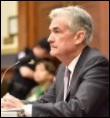By Pam Martens and Russ Martens: December 21, 2021 ~
Last Friday, with the public’s attention diverted to the surge in Omicron variant cases of COVID in the U.S. and holiday travelers’ attention focused on the safety of air travel and family gatherings, the Federal Reserve Bank of New York quietly announced, in a one sentence statement, that it was adding the following three federally-insured banks to its list of counterparties for its newly-minted $500 billion Standing Repo Facility: Citibank, Goldman Sachs Bank USA, and the New York Branch of Mizuho Bank.
If you’re stunned that Goldman Sachs is allowed to own a federally-insured bank under existing U.S. law, see our previous report: Goldman Sachs’ Rich Man’s Bank Backstopped by You and Me. If you’re stunned that a New York branch of Mizuho Bank, part of the Japanese conglomerate Mizuho Financial Group, is able to have federal deposit insurance backstopped by the U.S. taxpayer, welcome to the world of borderless global banking for the one percent.
These three banks have a number of things in common: (1) each financial institution already has a broker-dealer affiliate that is already one of the Fed’s 24 primary dealers that participates in the Fed’s repo operations; (2) each of the three banks’ primary dealer affiliates took large, secret loans from the Fed’s repo facility when credit collapsed on Wall Street on September 17, 2019; (3) all three institutions have trillions of dollars in exposure to derivatives according to data from the Office of the Comptroller of the Currency (OCC).
If all three banks already have broker-dealer affiliates participating in the Fed’s repo loan facility, why would another affiliate be added? The first thought that comes to mind is the fact that the Fed puts a daily cap on the dollar amount that each counterparty can borrow per day. By having two affiliates as counterparties, the amount that can be borrowed is doubled.
Why would these three banks need to have a sugar daddy at the Fed to loan them money in a financial crisis? Because all three banks have huge exposure to derivatives. According to the latest report from the OCC, as of September 30, 2021, Goldman Sachs Bank USA had $387 billion in assets versus $48 trillion (yes, trillion) in notional (face amount) derivatives. Citibank had $1.7 trillion in assets versus $44 trillion in notional derivatives. Mizuho’s bank holding company had $48.8 billion in assets versus $6 trillion in derivatives.
Until July of this year, only the Fed’s primary dealers were eligible to participate in the Fed’s repo facility. That all changed in July, when the Fed announced it would be adding depository banks as counterparties and making the repo facility a “Standing Repo Facility” with the ability to lend $500 billion per day in overnight loans, which can, of course, be rolled over for long periods of time. See our July report: The Fed Announces Plans to Permanently Backstop Wall Street with a Standing Repo Loan Facility of $500 Billion…Starting Tomorrow.
How did the secret loans from the Fed’s last repo loan bailout to Wall Street that began in the fall of 2019 become public information? On October 13, Wall Street On Parade broke the news that the New York Fed had quietly released the names of Wall Street firms that had grabbed tens of billions of dollars of repo loans under the Fed’s emergency repo loan operations that began on September 17, 2019 – months before there was a COVID-19 case in the United States or anywhere else in the world.
Repos (repurchase agreements) are a short-term form of borrowing where corporations, banks, securities firms and money market mutual funds obtain loans from each other by providing safe forms of collateral such as Treasury securities. The repo market is supposed to function without the assistance of the Federal Reserve. But on September 17, 2019, the oversized demand for the repos and the lack of available funds to meet the demand drove the overnight interest rate on repo loans to an unprecedented 10 percent at one point. Typically, the overnight repo rate trades in line with the Federal Funds rate, which was at that time targeted at 2 to 2.25 percent by the Fed.
On the first day of the emergency repo loan operations on September 17, the New York Fed provided a total of $53.15 billion in one-day repo loans. JPMorgan Securities was the largest borrower at $7.6 billion or 14 percent of the total. At that point in time, JPMorgan Chase held $2.3 trillion in assets and $55 trillion in notional derivatives.
Also on the first day of the repo loans on September 17: BNP Paribas Securities, part of the French investment bank, took $5 billion of the $53.15 billion or 9 percent. Goldman Sachs also took $5 billion or another 9 percent; Citigroup borrowed $3.5 billion; Nomura Securities borrowed $3.5 billion; the New York branch of Societe Generale, a French multinational investment bank, borrowed $3 billion; the New York unit of the Bank of Nova Scotia borrowed $2.5 billion; Barclays Capital, part of the U.K. bank, took $2.4 billion; Mizuho Securities borrowed $1 billion. (There were numerous other borrowers. See the full list here.)
Under the Dodd-Frank financial reform legislation of 2010, the Fed is required to release its repo loan data after two years has elapsed, unless it elects to do so earlier. The Fed is now releasing the data from 2019 quarter by quarter. Thus far, the public has only seen the Wall Street borrowing binge for the period beginning on September 17 through the end of that quarter, ending on September 30, 2019.


